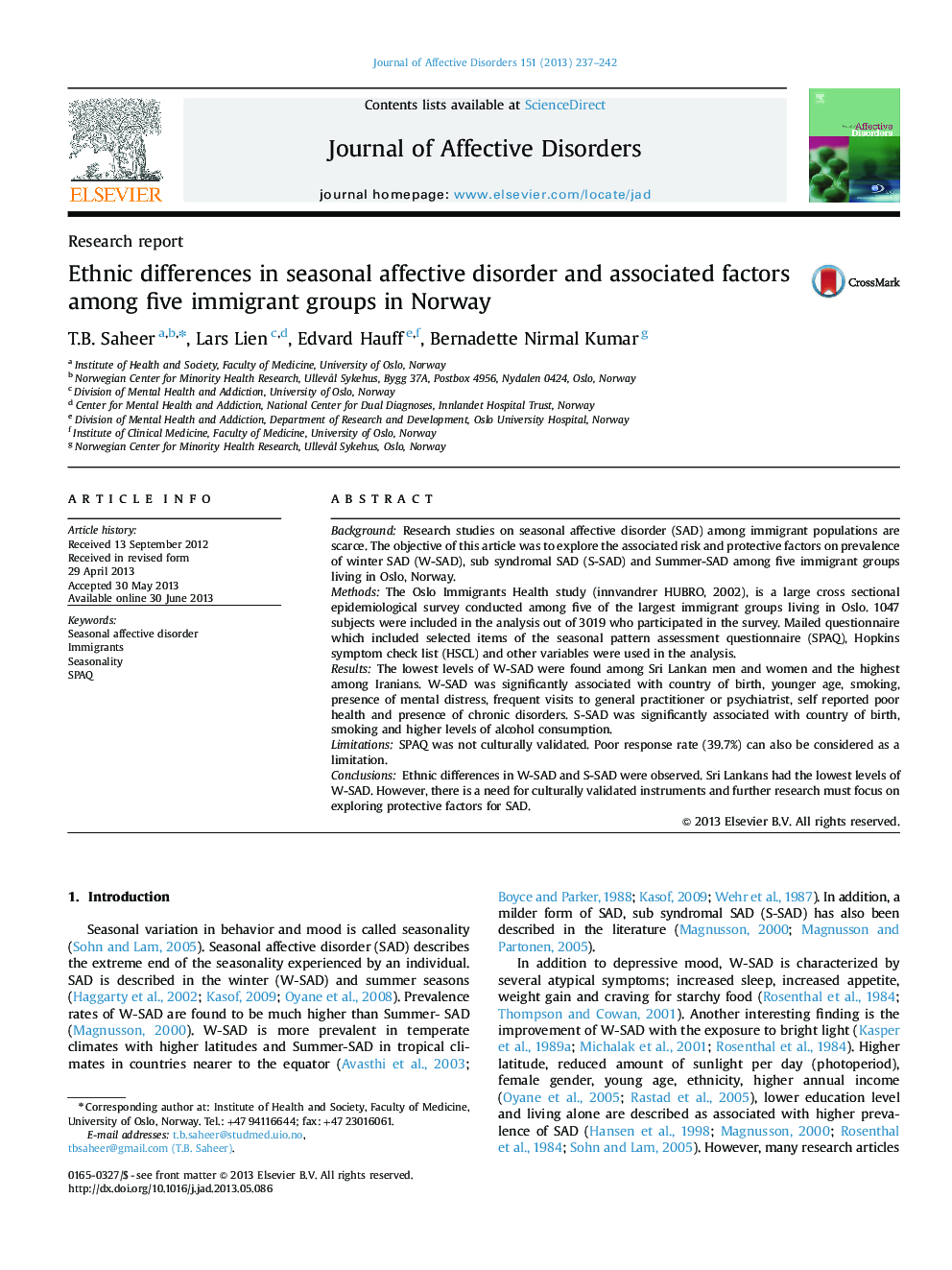| Article ID | Journal | Published Year | Pages | File Type |
|---|---|---|---|---|
| 6234077 | Journal of Affective Disorders | 2013 | 6 Pages |
BackgroundResearch studies on seasonal affective disorder (SAD) among immigrant populations are scarce. The objective of this article was to explore the associated risk and protective factors on prevalence of winter SAD (W-SAD), sub syndromal SAD (S-SAD) and Summer-SAD among five immigrant groups living in Oslo, Norway.MethodsThe Oslo Immigrants Health study (innvandrer HUBRO, 2002), is a large cross sectional epidemiological survey conducted among five of the largest immigrant groups living in Oslo. 1047 subjects were included in the analysis out of 3019 who participated in the survey. Mailed questionnaire which included selected items of the seasonal pattern assessment questionnaire (SPAQ), Hopkins symptom check list (HSCL) and other variables were used in the analysis.ResultsThe lowest levels of W-SAD were found among Sri Lankan men and women and the highest among Iranians. W-SAD was significantly associated with country of birth, younger age, smoking, presence of mental distress, frequent visits to general practitioner or psychiatrist, self reported poor health and presence of chronic disorders. S-SAD was significantly associated with country of birth, smoking and higher levels of alcohol consumption.LimitationsSPAQ was not culturally validated. Poor response rate (39.7%) can also be considered as a limitation.ConclusionsEthnic differences in W-SAD and S-SAD were observed. Sri Lankans had the lowest levels of W-SAD. However, there is a need for culturally validated instruments and further research must focus on exploring protective factors for SAD.
